第102章 CHAPTER XIV.(6)
Although we had failed, I never enjoyed a hunt so much either before or since; it was a magnificent run, and still more magnificent was the idea that a man, with no weapon but a sword, could attack and generally vanquish every huge animal of creation. I felt inclined to discard all my rifles, and to adopt the sabre, with a first-class horse instead of the common horses of this country, that were totally unfit for such a style of hunting, when carrying nearly fifteen stone.
Taher Sheriff explained that at all times the rhinoceros was the most difficult animal to sabre, on account of his extraordinary swiftness, and, although he had killed many with the sword, it was always after a long and fatiguing hunt: at the close of which, the animal becoming tired, generally turned to bay, in which case one hunter occupied his attention, while another galloped up behind, and severed the hamstring. The rhinoceros, unlike the elephant, can go very well upon three legs, which enhances the danger, as one cut will not utterly disable him.
There is only one species of this animal in Abyssinia; this is the two-horned black rhinoceros, known in South Africa as the keitloa. This animal is generally five feet six inches to five feet eight inches high at the shoulder, and, although so bulky and heavily built, it is extremely active, as our long and fruitless hunt had exemplified. The skin is about half the thickness of that of the hippopotamus, but of extreme toughness and closeness of texture; when dried and polished it resembles horn. Unlike the Indian species of rhinoceros, the black variety of Africa is free from folds, and the hide fits smoothly on the body like that of the buffalo. This two-horned black species is exceedingly vicious; it is one of the very few animals that will generally assume the offensive; it considers all creatures to be enemies, and, although it is not acute in either sight or hearing, it possesses so wonderful a power of scent, that it will detect a stranger at a distance of five or six hundred yards should the wind be favourable.
I have observed that a rhinoceros will generally charge down upon the object that it smells, but does not see; thus when the animal is concealed either in high grass or thick jungle, should it scent a man who may be passing unseen to windward, it will rush down furiously upon the object it has winded, with three loud whiffs, resembling a jet of steam from a safety-valve. As it is most difficult and next to impossible to kill a rhinoceros when charging, on account of the protection to the brain afforded by the horns, an unexpected charge in thick jungle is particularly unpleasant; especially when on horseback, as there is no means of escape but to rush headlong through all obstacles, when the rider will most likely share the fate that befell the unfortunate Jali.